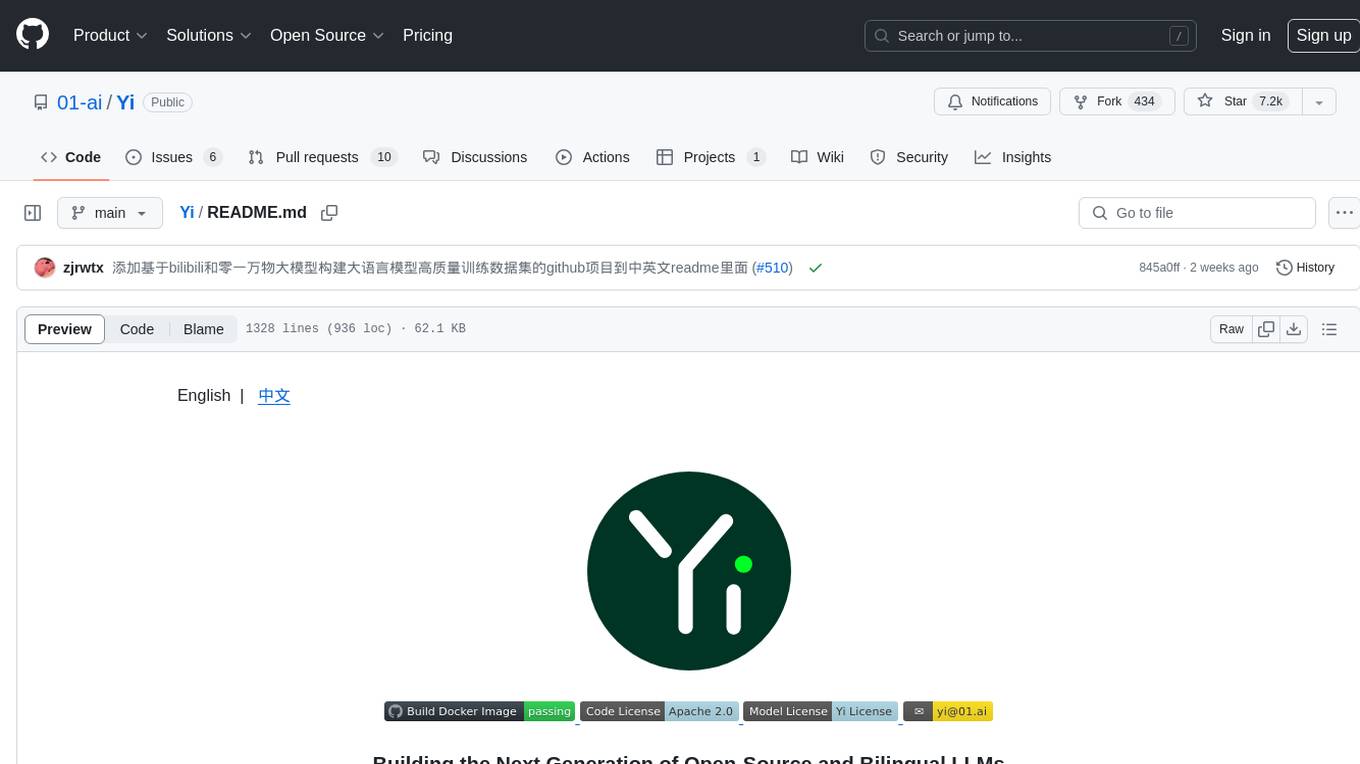
MaskLLM
[NeurIPS 24 Spotlight] MaskLLM: Learnable Semi-structured Sparsity for Large Language Models
Stars: 142
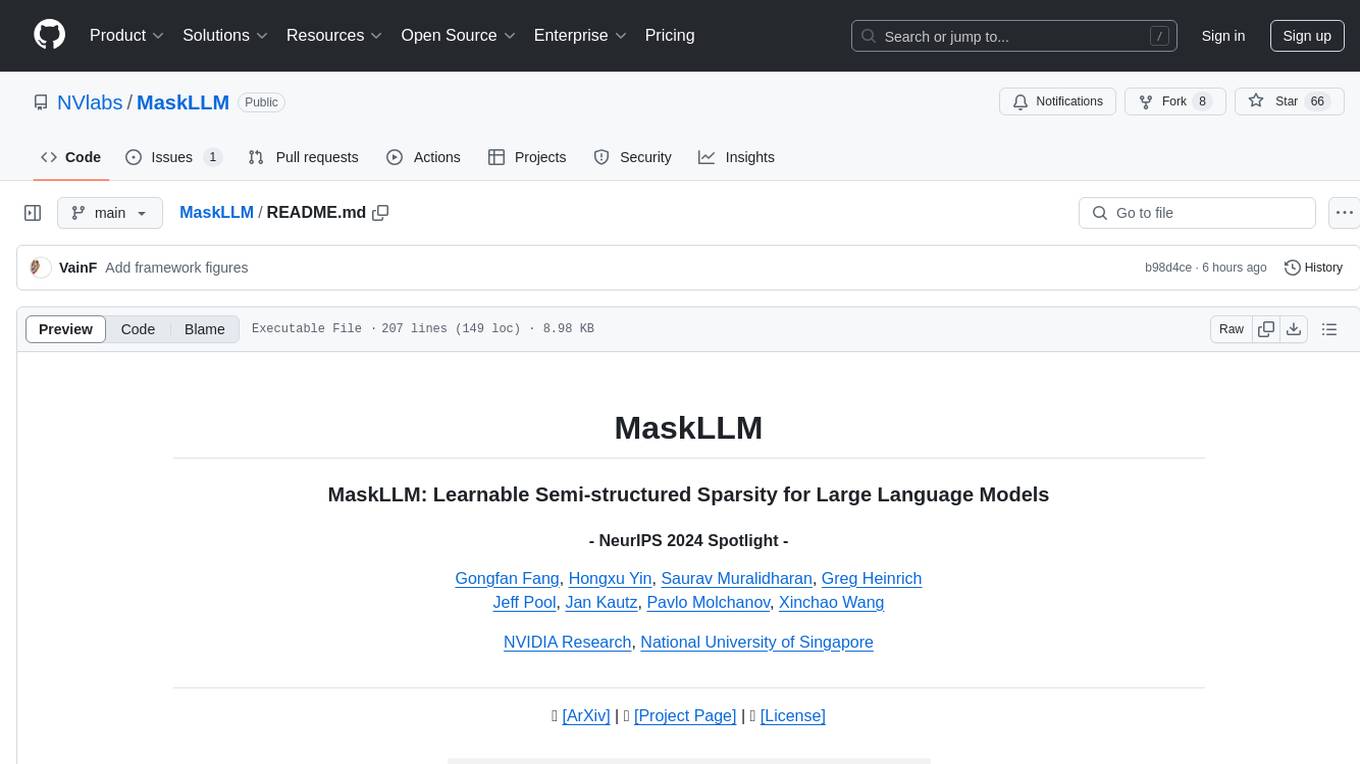
MaskLLM is a learnable pruning method that establishes Semi-structured Sparsity in Large Language Models (LLMs) to reduce computational overhead during inference. It is scalable and benefits from larger training datasets. The tool provides examples for running MaskLLM with Megatron-LM, preparing LLaMA checkpoints, pre-tokenizing C4 data for Megatron, generating prior masks, training MaskLLM, and evaluating the model. It also includes instructions for exporting sparse models to Huggingface.
README:
Gongfan Fang, Hongxu Yin, Saurav Muralidharan, Greg Heinrich
Jeff Pool, Jan Kautz, Pavlo Molchanov, Xinchao Wang
NVIDIA Research, National University of Singapore
📄 [ArXiv] | 🎯 [Project Page] | 📎 [License] | 🤗 [Hugging Face] | 👓 [MaskLLM-4Vision]

This work introduces MaskLLM, a learnable pruning method that establishes Semi-structured (or ``N:M'') Sparsity in LLMs, aimed at reducing computational overhead during inference. The proposed method is scalable and stands to benefit from larger training datasets.
We provide pre-computed masks for Hugging Face Models such as Llama-2 7B and Llama-3 8B with the minimum requirements. It will not involve docker, Megatron or data preprocessing.
pip install transformers accelerate datasets SentencePiece The following masks were trained and provided by @VainF. We use huggingface_hub to automatically download those masks and apply them to official LLMs for evaluation. Those mask files were compressed using numpy.savez_compressed. More results for baselines (SparseGPT, Wanda) can be found in the appendix.
| Model | Pattern | Training Data | Training/Eval SeqLen | PPL (Dense) | PPL (SparseGPT) | PPL (MaskLLM) | Link |
|---|---|---|---|---|---|---|---|
| LLaMA-2 7B | 2:4 | C4 (2B Tokens) | 4096 | 5.12 | 10.42 | 6.78 | HuggingFace |
| LLaMA-3 8B | 2:4 | C4 (2B Tokens) | 4096 | 5.75 | 17.64 | 8.49 | HuggingFace |
| LLaMA-3.1 8B | 2:4 | C4 (2B Tokens) | 4096 | 5.89 | 18.65 | 8.58 | HuggingFace |
# LLaMA-2 7B, Wikitext-2 PPL=6.78
python eval_llama_ppl.py --model meta-llama/Llama-2-7b-hf --mask Vinnnf/LLaMA-2-7B-MaskLLM-C4
# LLaMA-3 8B, Wikitext-2 PPL=8.49
python eval_llama_ppl.py --model meta-llama/Meta-Llama-3-8B --mask Vinnnf/LLaMA-3-8B-MaskLLM-C4
# LlaMa-3.1 8B, Wikitext-2 PPL=8.58
python eval_llama_ppl.py --model meta-llama/Meta-Llama-3.1-8B --mask Vinnnf/LLaMA-3.1-8B-MaskLLM-C4Output (LlaMa-3.1 8B):
torch 2.2.0a0+81ea7a4
transformers 4.47.0
accelerate 1.2.0
# of gpus: 8
loading llm model meta-llama/Meta-Llama-3.1-8B
Loading checkpoint shards: 100%|█████████| 4/4 [00:06<00:00, 1.74s/it]
mask_compressed.npz: 100%|█████████| 591M/591M [00:51<00:00, 11.6MB/s
...
model.layers.31.mlp.up_proj.weight - sparsity 0.5000
model.layers.31.mlp.down_proj.weight - sparsity 0.5000
model.layers.31.input_layernorm.weight - sparsity 0.0000
model.layers.31.post_attention_layernorm.weight - sparsity 0.0000
model.norm.weight - sparsity 0.0000
lm_head.weight - sparsity 0.0000
use device cuda:0
evaluating on wikitext2
nsamples 70
sample 0
sample 50
wikitext perplexity 8.578034400939941More masks learned on public datasets will be released in the future.
The following section provides an example of MaskLLM-LLaMA-2/3 on a single node with 8 GPUs. The LLaMA model will be shared across 8 GPUs with tensor parallelism, taking ~40GB per GPU for end-to-end training.
Docker is required for Megatron-LM. Please install docker with sudo apt install docker.io and NVIDIA Container Toolkit following the official instructions. We use the docker image pytorch:24.01-py3 from NVIDIA NGC as the base image.
docker run --gpus all --ipc=host --ulimit memlock=-1 --ulimit stack=67108864 -v $HOME:$HOME -it --rm nvcr.io/nvidia/pytorch:24.01-py3In the container, we need to download the LLaMA checkpoints and convert them to Megatron format.
Install basic dependencies.
pip install transformers accelerate datasets SentencePiece wandb tqdm ninja tensorboardx==2.6 pulp timm einops nltkThe following scripts download and save all HF checkpoints at ./assets/checkpoints.
python scripts/tools/download_llama2_7b_hf.py
python scripts/tools/download_llama2_13b_hf.py
python scripts/tools/download_llama3_8b_hf.py
python scripts/tools/download_llama3.1_8b_hf.pyassets
├── checkpoints
│ ├── llama2_13b_hf
│ ├── llama2_7b_hf
│ ├── llama3_8b_hf
│ └── llama3.1_8b_hfTips: If you would like to use the Huggingface cache, link the "~/.cache/huggingface/hub" to "assets/checkpoints": ln -s $HOME/.cache/huggingface/hub assets/cache
Convert the downloaded HF checkpoint to Megatron format, with tp=8 for tensor parallelism.
bash scripts/tools/convert_llama2_7b_hf_to_megatron.sh
bash scripts/tools/convert_llama2_13b_hf_to_megatron.sh
bash scripts/tools/convert_llama3_8b_hf_to_megatron.sh
bash scripts/tools/convert_llama3.1_8b_hf_to_megatron.shassets/
├── checkpoints
│ ├── llama2_13b_hf
│ ├── llama2_13b_megatron_tp8 # <= Megatron format
│ ├── llama2_7b_hf
│ ├── llama2_7b_megatron_tp8
│ ├── llama3_8b_hf
│ ├── llama3_8b_megatron_tp8
│ ├── llama3.1_8b_hf
│ └── llama3.1_8b_megatron_tp8Evaluate the dense model with the arguments size (7b/8b/13b), tensor parallelism (8), and sparsity (dense or sparse).
bash scripts/ppl/evaluate_llama2_wikitext2.sh assets/checkpoints/llama2_7b_megatron_tp8 7b 8 dense
bash scripts/ppl/evaluate_llama2_wikitext2.sh assets/checkpoints/llama2_13b_megatron_tp8 13b 8 dense
bash scripts/ppl/evaluate_llama3_wikitext2.sh assets/checkpoints/llama3_8b_megatron_tp8 8b 8 dense
bash scripts/ppl/evaluate_llama3.1_wikitext2.sh assets/checkpoints/llama3.1_8b_megatron_tp8 8b 8 dense# Outputs for LLaMA-2 7B:
validation results on WIKITEXT2 | avg loss: 1.6323E+00 | ppl: 5.1155E+00 | adjusted ppl: 5.1155E+00 | token ratio: 1.0 |
# Outputs for LLaMA-2 13B:
validation results on WIKITEXT2 | avg loss: 1.5202E+00 | ppl: 4.5730E+00 | adjusted ppl: 4.5730E+00 | token ratio: 1.0 |
# Outputs for LLaMA-3 8B:
validation results on WIKITEXT2 | avg loss: 1.7512E+00 | ppl: 5.7615E+00 | adjusted ppl: 5.7615E+00 | token ratio: 1.0 |
# Outputs for LLaMA-3.1 8B
validation results on WIKITEXT2 | avg loss: 1.7730E+00 | ppl: 5.8887E+00 | adjusted ppl: 5.8887E+00 | token ratio: 1.0 |Our paper uses a blended internal data for training. For reproducibility, we provide an example of learning masks on a subset of the public allenai/c4 dataset. Corresponding results can be found in Appendix D of our paper. Please see docs/preprocess_c4.md for the instructions.
It is encouraged to start training with a prior mask, either generated by SparseGPT, Wanda or Magnitude Pruning. The following scripts prune an LLaMA-2 7B model with 2:4 patterns. For SparseGPT, weight update is disabled. Add an argument --update-weight if necessary. More similar scripts for LLaMA-2 13B, LLaMA-3 8B and LLaMA-3.1 8B are available at scripts/oneshot.
# <= SparseGPT mask
bash scripts/oneshot/run_llama2_7b_prune_tp8.sh hessian # --update-weight
# <= Magnitude mask
bash scripts/oneshot/run_llama2_7b_prune_tp8.sh magnitude # --update-weight
# <= Wanda mask
bash scripts/oneshot/run_llama2_7b_prune_tp8.sh wanda # --update-weight The pruned Llama model will contain additional .mask parameters in sparse linears, such as module.language_model.encoder.layers.31.mlp.dense_h_to_4h.mask.
output/
├── oneshot_pruning
│ ├── checkpoint
│ │ ├── llama2-7b-tp8.sparse.nmprune.sp0.5hessian.ex0
│ │ └── llama2-7b-tp8.sparse.nmprune.sp0.5magnitude.ex0
│ │ ├── llama2-7b-tp8.sparse.nmprune.sp0.5wanda.ex0
│ ├── llama2-7b-tp8.sparse.nmprune.sp0.5hessian.ex0.log
│ ├── llama2-7b-tp8.sparse.nmprune.sp0.5magnitude.ex0.log
│ └── llama2-7b-tp8.sparse.nmprune.sp0.5wanda.ex0.log
To evaluate the pruned model:
bash scripts/ppl/evaluate_llama2_wikitext2.sh output/oneshot_pruning/checkpoint/llama2-7b-tp8.sparse.nmprune.sp0.5hessian.ex0 7b 8 sparse| Mask Sampling | Visualization |
|---|---|
 |
 |
By default, the script will load SparseGPT prior. Please modify the path in the script to load other masks. Here 0 means the initial training, and 1 means continue training from the latest checkpoint.
# Initial training with a prior mask.
# By default, the script will load output/oneshot_pruning/checkpoint/llama2-7b-tp8.sparse.nmprune.sp0.5hessian.ex0 as the mask prior
bash scripts/learnable_sparsity/llama2_7b_mask_only_tp8_c4.sh 0
# Pass the argument 1 to continue the training from the latest checkpoint
bash scripts/learnable_sparsity/llama2_7b_mask_only_tp8_c4.sh 1For inference, we only need those winner masks with the highest probability. The following command will trim the checkpoint and remove unnecessary components.
python tool_trim_learnable_sparsity.py --ckpt_dir output/checkpoints/llama2-7b-tp8-mask-only-c4-singlenode/train_iters_2000/ckpt/iter_0002000 The script will create a new checkpoint named release and update the pointer to the latest checkpoint in latest_checkpointed_iteration.txt.
# Llama-2 7b & 13b
bash scripts/ppl/evaluate_llama2_wikitext2.sh output/checkpoints/llama2-7b-tp8-mask-only-c4-singlenode/train_iters_2000/ckpt/ 7b 8 sparse
bash scripts/ppl/evaluate_llama2_wikitext2.sh output/checkpoints/llama2-13b-tp8-mask-only-c4-singlenode/train_iters_2000/ckpt/ 13b 8 sparse
# Llama-3 8b
bash scripts/ppl/evaluate_llama3_wikitext2.sh output/checkpoints/llama3-8b-tp8-mask-only-c4-singlenode/train_iters_2000/ckpt/ 8b 8 sparse
# Llama-3.1 8b
bash scripts/ppl/evaluate_llama3.1_wikitext2.sh output/checkpoints/llama3.1-8b-tp8-mask-only-c4-singlenode/train_iters_2000/ckpt/ 8b 8 sparsePlease see docs/export_hf.md for instructions on exporting sparse models to Huggingface.
@article{fang2024maskllm,
title={Maskllm: Learnable semi-structured sparsity for large language models},
author={Fang, Gongfan and Yin, Hongxu and Muralidharan, Saurav and Heinrich, Greg and Pool, Jeff and Kautz, Jan and Molchanov, Pavlo and Wang, Xinchao},
journal={arXiv preprint arXiv:2409.17481},
year={2024}
}For Tasks:
Click tags to check more tools for each tasksFor Jobs:
Alternative AI tools for MaskLLM
Similar Open Source Tools

MaskLLM
MaskLLM is a learnable pruning method that establishes Semi-structured Sparsity in Large Language Models (LLMs) to reduce computational overhead during inference. It is scalable and benefits from larger training datasets. The tool provides examples for running MaskLLM with Megatron-LM, preparing LLaMA checkpoints, pre-tokenizing C4 data for Megatron, generating prior masks, training MaskLLM, and evaluating the model. It also includes instructions for exporting sparse models to Huggingface.
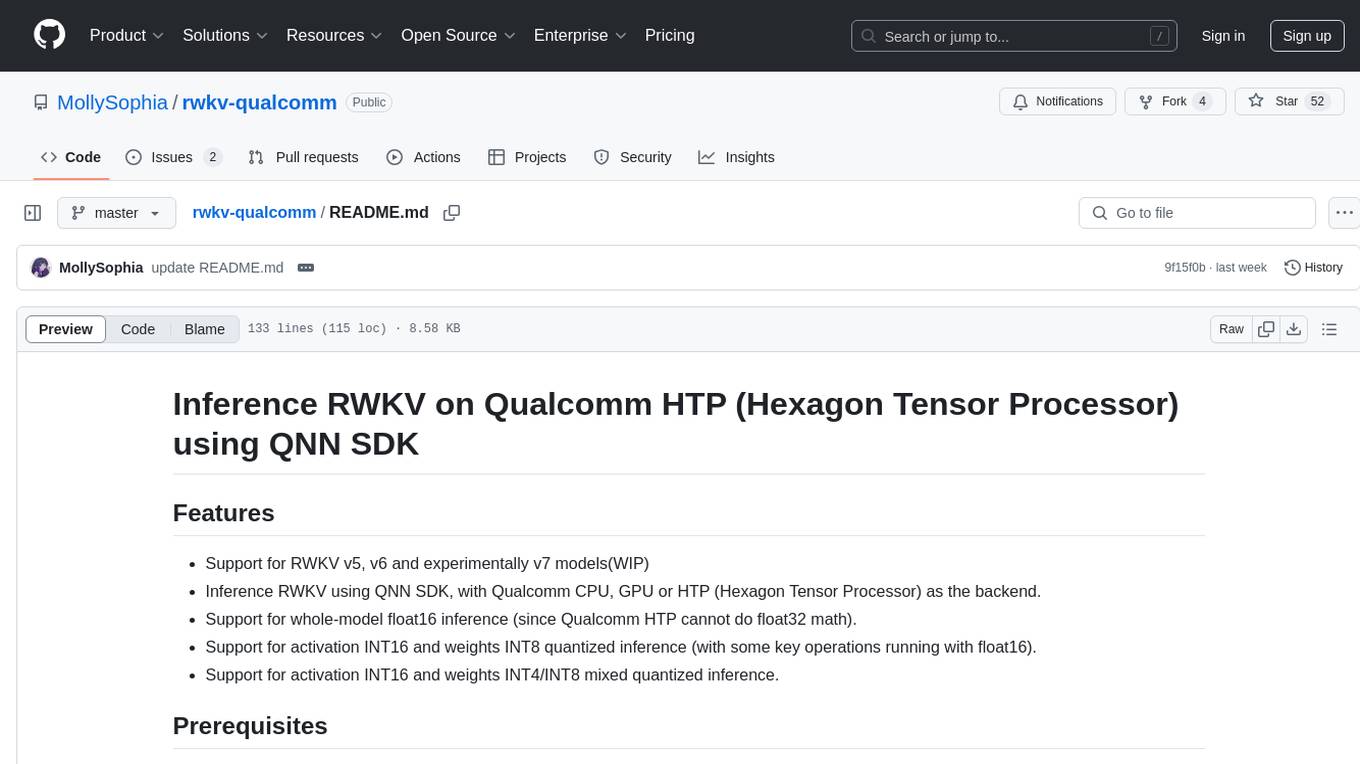
rwkv-qualcomm
This repository provides support for inference RWKV models on Qualcomm HTP (Hexagon Tensor Processor) using QNN SDK. It supports RWKV v5, v6, and experimentally v7 models, inference using Qualcomm CPU, GPU, or HTP as the backend, whole-model float16 inference, activation INT16 and weights INT8 quantized inference, and activation INT16 and weights INT4/INT8 mixed quantized inference. Users can convert model weights to QNN model library files, generate HTP context cache, and run inference on Qualcomm Snapdragon SM8650 with HTP v75. The project requires QNN SDK, AIMET toolkit, and specific hardware for verification.

vnc-lm
vnc-lm is a Discord bot designed for messaging with language models. Users can configure model parameters, branch conversations, and edit prompts to enhance responses. The bot supports various providers like OpenAI, Huggingface, and Cloudflare Workers AI. It integrates with ollama and LiteLLM, allowing users to access a wide range of language model APIs through a single interface. Users can manage models, switch between models, split long messages, and create conversation branches. LiteLLM integration enables support for OpenAI-compatible APIs and local LLM services. The bot requires Docker for installation and can be configured through environment variables. Troubleshooting tips are provided for common issues like context window problems, Discord API errors, and LiteLLM issues.
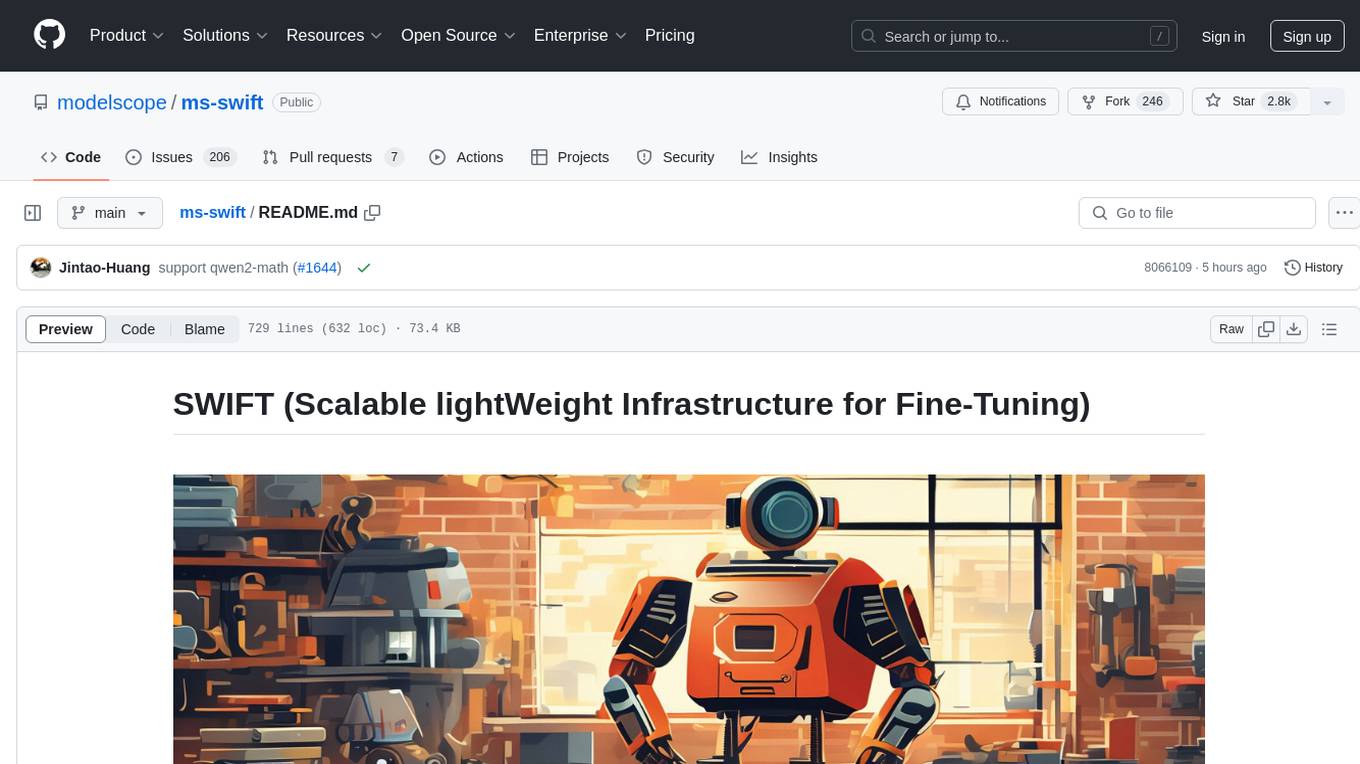
ms-swift
ms-swift is an official framework provided by the ModelScope community for fine-tuning and deploying large language models and multi-modal large models. It supports training, inference, evaluation, quantization, and deployment of over 400 large models and 100+ multi-modal large models. The framework includes various training technologies and accelerates inference, evaluation, and deployment modules. It offers a Gradio-based Web-UI interface and best practices for easy application of large models. ms-swift supports a wide range of model types, dataset types, hardware support, lightweight training methods, distributed training techniques, quantization training, RLHF training, multi-modal training, interface training, plugin and extension support, inference acceleration engines, model evaluation, and model quantization.
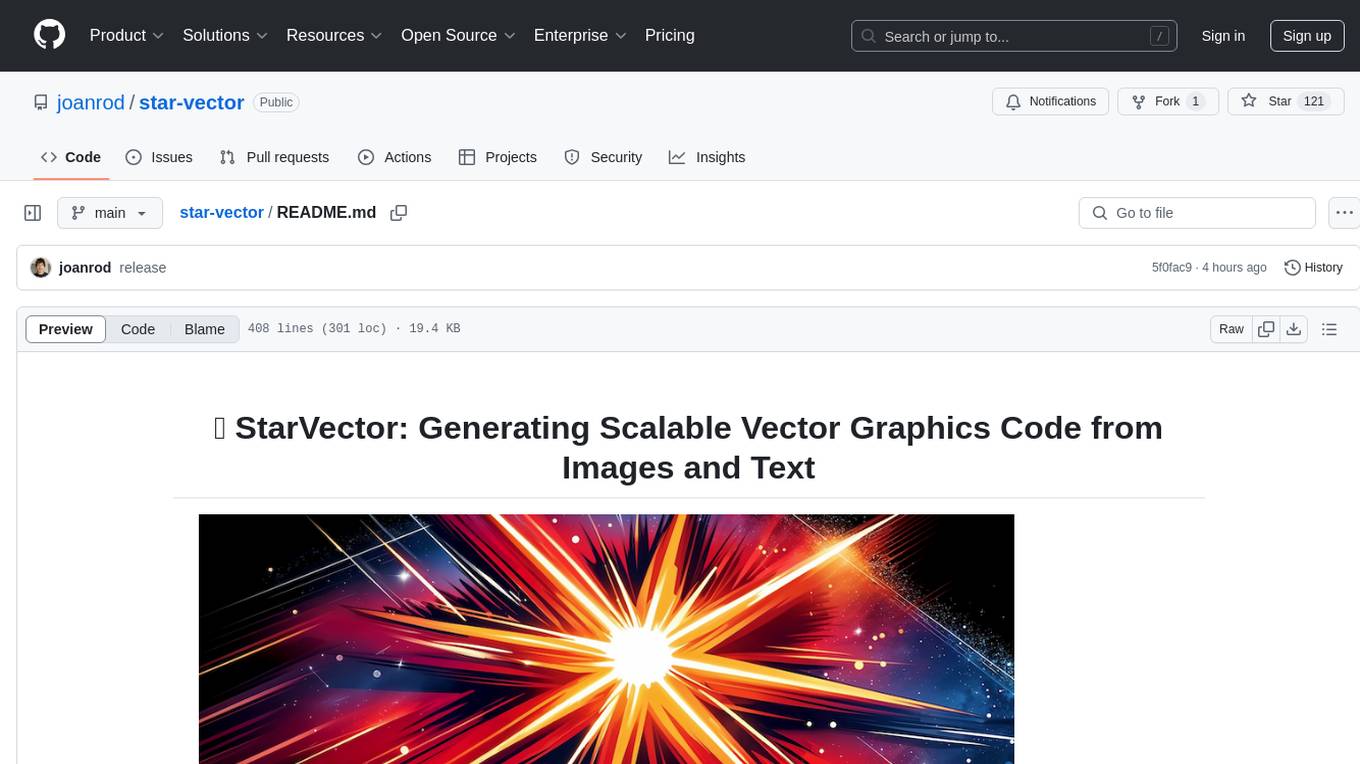
star-vector
StarVector is a multimodal vision-language model for Scalable Vector Graphics (SVG) generation. It can be used to perform image2SVG and text2SVG generation. StarVector works directly in the SVG code space, leveraging visual understanding to apply accurate SVG primitives. It achieves state-of-the-art performance in producing compact and semantically rich SVGs. The tool provides Hugging Face model checkpoints for image2SVG vectorization, with models like StarVector-8B and StarVector-1B. It also offers datasets like SVG-Stack, SVG-Fonts, SVG-Icons, SVG-Emoji, and SVG-Diagrams for evaluation. StarVector can be trained using Deepspeed or FSDP for tasks like Image2SVG and Text2SVG generation. The tool provides a demo with options for HuggingFace generation or VLLM backend for faster generation speed.
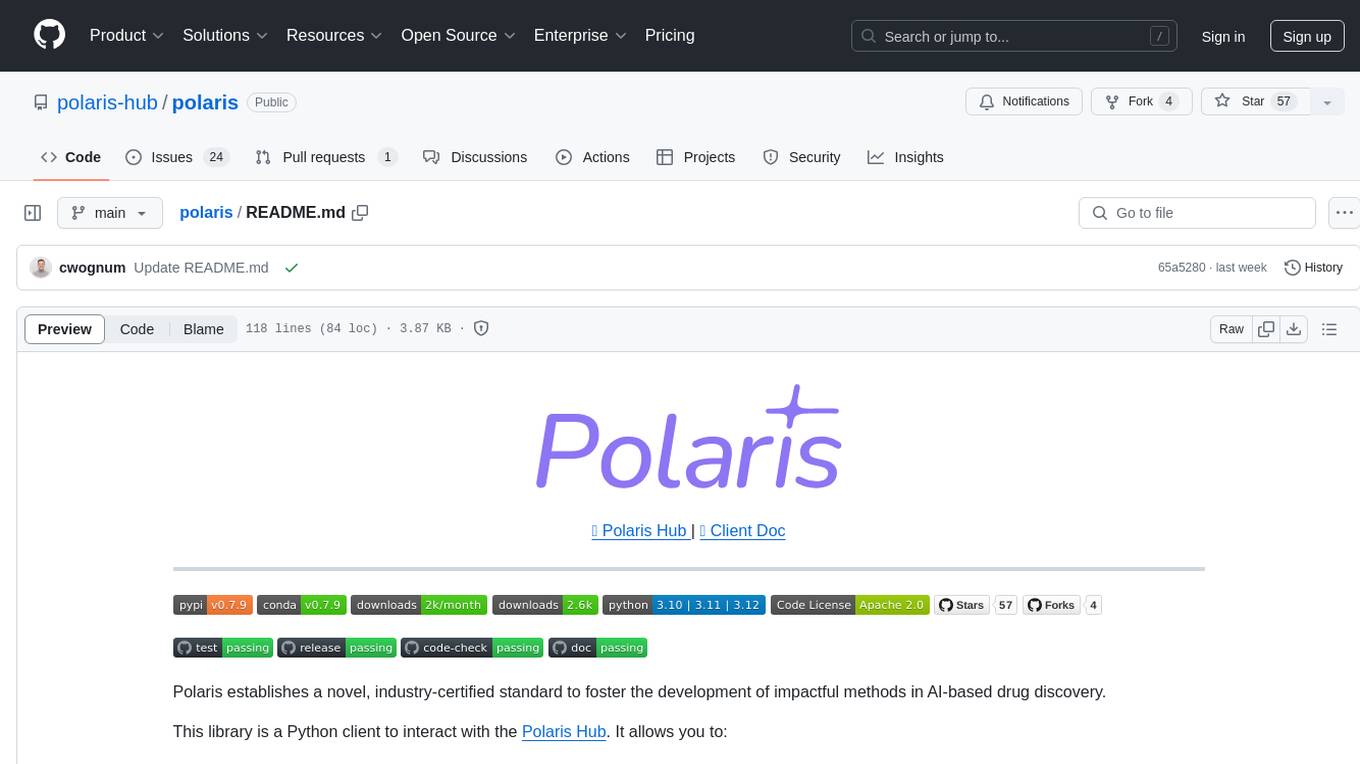
polaris
Polaris establishes a novel, industry‑certified standard to foster the development of impactful methods in AI-based drug discovery. This library is a Python client to interact with the Polaris Hub. It allows you to download Polaris datasets and benchmarks, evaluate a custom method against a Polaris benchmark, and create and upload new datasets and benchmarks.
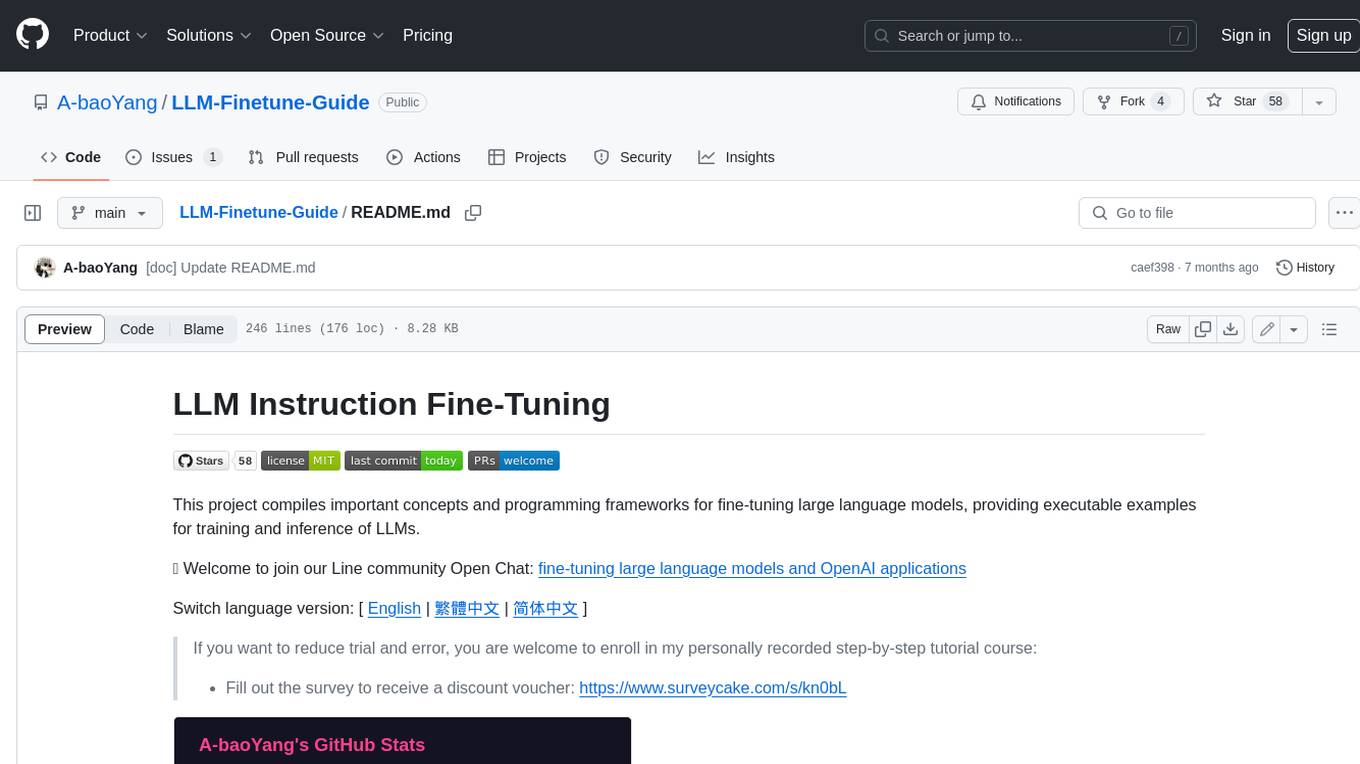
LLM-Finetune-Guide
This project provides a comprehensive guide to fine-tuning large language models (LLMs) with efficient methods like LoRA and P-tuning V2. It includes detailed instructions, code examples, and performance benchmarks for various LLMs and fine-tuning techniques. The guide also covers data preparation, evaluation, prediction, and running inference on CPU environments. By leveraging this guide, users can effectively fine-tune LLMs for specific tasks and applications.
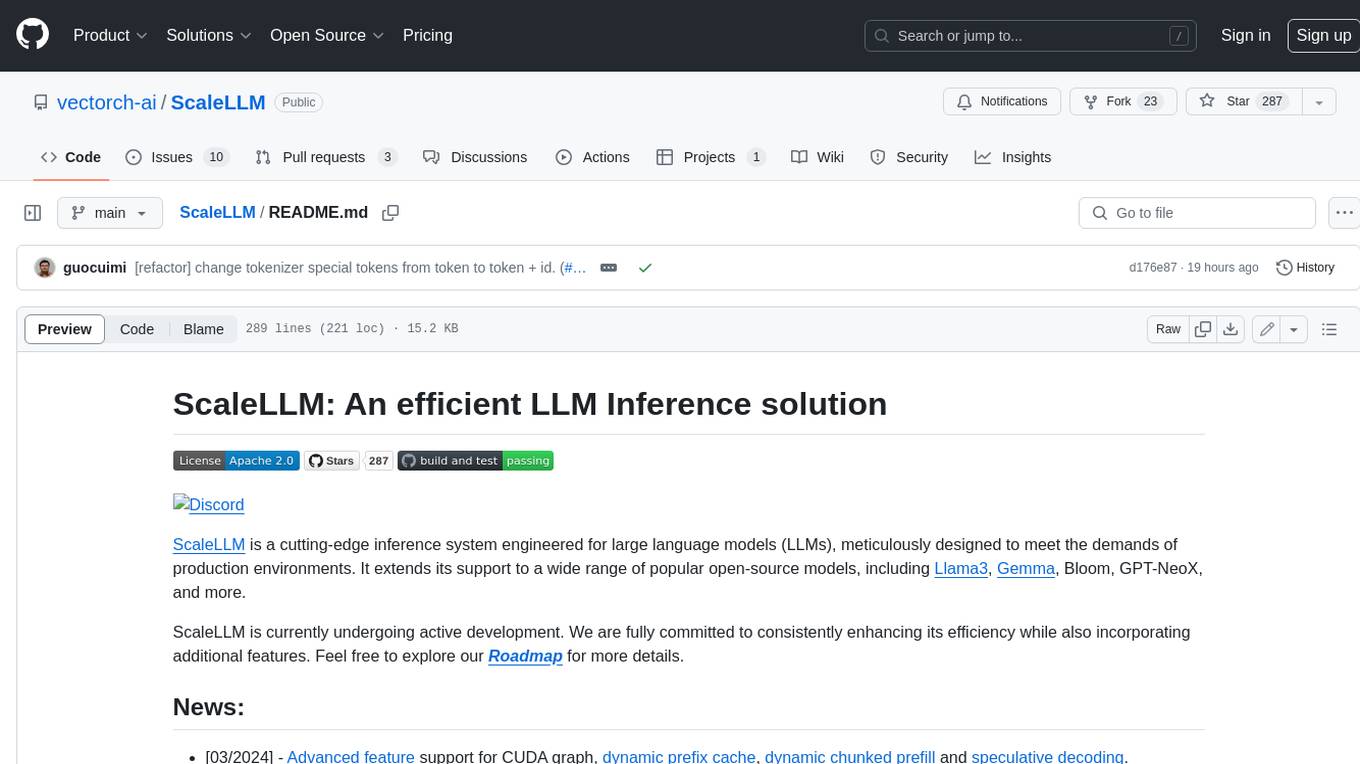
ScaleLLM
ScaleLLM is a cutting-edge inference system engineered for large language models (LLMs), meticulously designed to meet the demands of production environments. It extends its support to a wide range of popular open-source models, including Llama3, Gemma, Bloom, GPT-NeoX, and more. ScaleLLM is currently undergoing active development. We are fully committed to consistently enhancing its efficiency while also incorporating additional features. Feel free to explore our **_Roadmap_** for more details. ## Key Features * High Efficiency: Excels in high-performance LLM inference, leveraging state-of-the-art techniques and technologies like Flash Attention, Paged Attention, Continuous batching, and more. * Tensor Parallelism: Utilizes tensor parallelism for efficient model execution. * OpenAI-compatible API: An efficient golang rest api server that compatible with OpenAI. * Huggingface models: Seamless integration with most popular HF models, supporting safetensors. * Customizable: Offers flexibility for customization to meet your specific needs, and provides an easy way to add new models. * Production Ready: Engineered with production environments in mind, ScaleLLM is equipped with robust system monitoring and management features to ensure a seamless deployment experience.
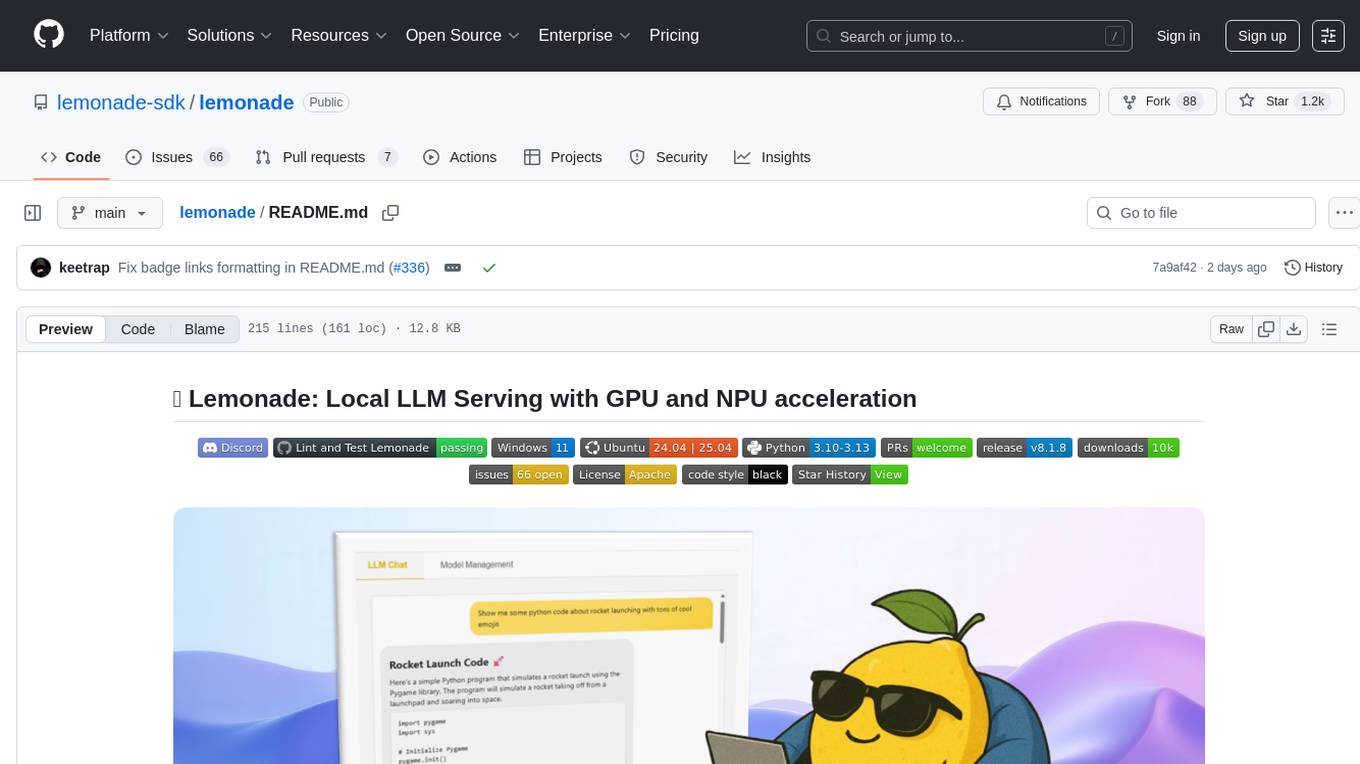
lemonade
Lemonade is a tool that helps users run local Large Language Models (LLMs) with high performance by configuring state-of-the-art inference engines for their Neural Processing Units (NPUs) and Graphics Processing Units (GPUs). It is used by startups, research teams, and large companies to run LLMs efficiently. Lemonade provides a high-level Python API for direct integration of LLMs into Python applications and a CLI for mixing and matching LLMs with various features like prompting templates, accuracy testing, performance benchmarking, and memory profiling. The tool supports both GGUF and ONNX models and allows importing custom models from Hugging Face using the Model Manager. Lemonade is designed to be easy to use and switch between different configurations at runtime, making it a versatile tool for running LLMs locally.
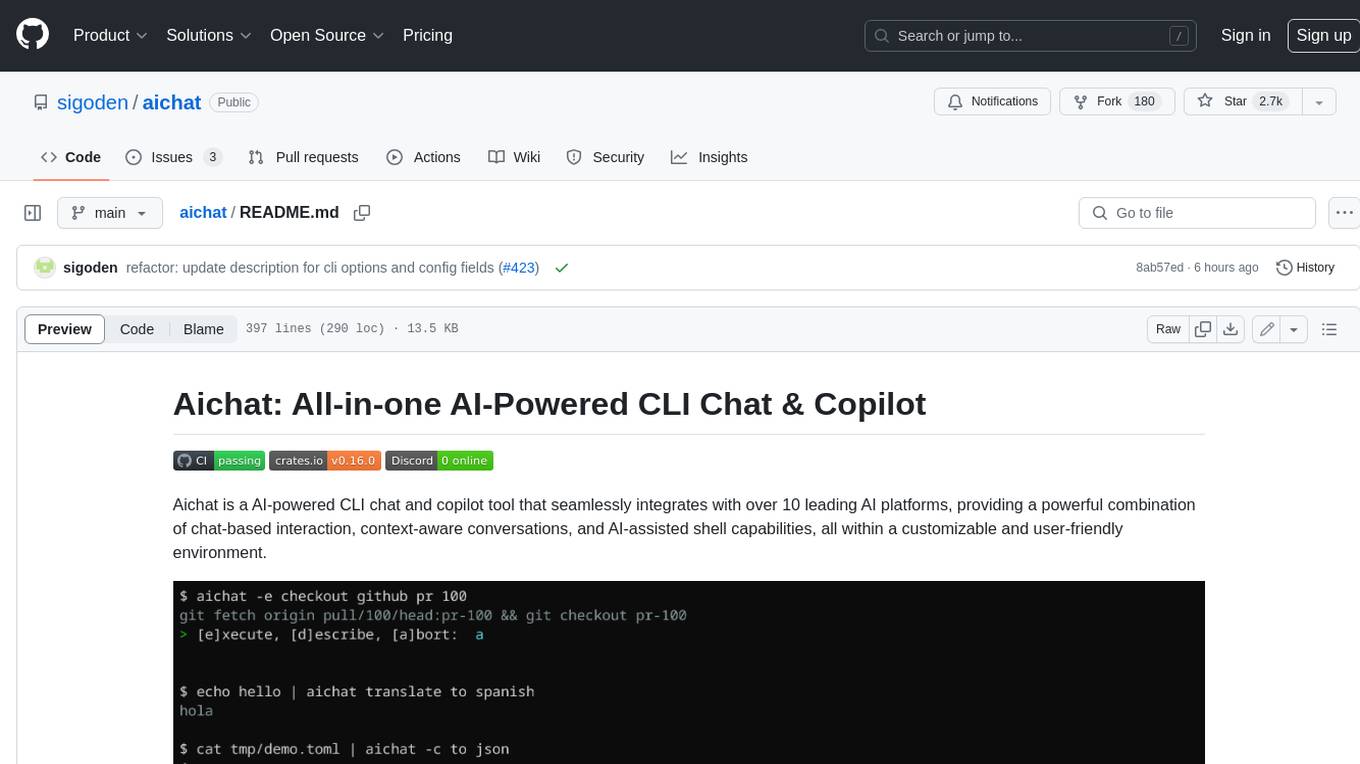
aichat
Aichat is an AI-powered CLI chat and copilot tool that seamlessly integrates with over 10 leading AI platforms, providing a powerful combination of chat-based interaction, context-aware conversations, and AI-assisted shell capabilities, all within a customizable and user-friendly environment.
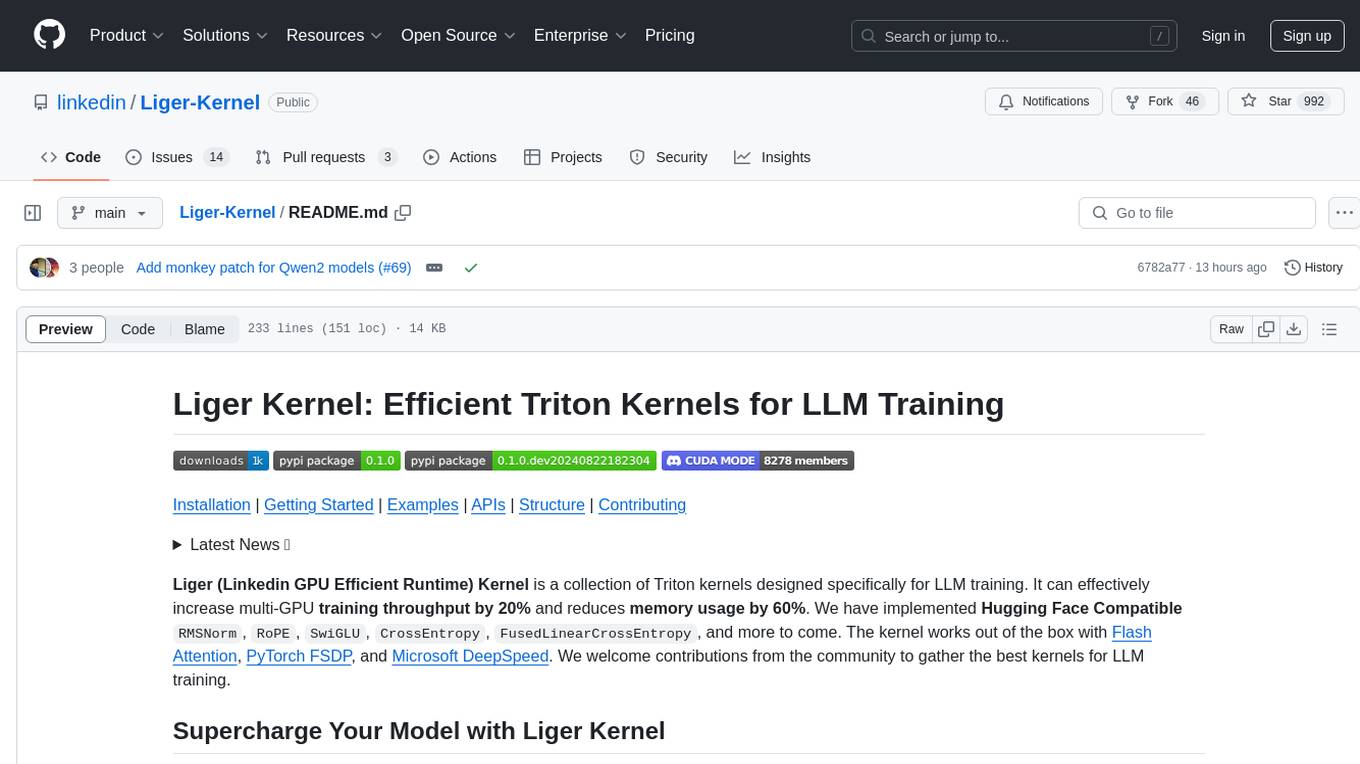
Liger-Kernel
Liger Kernel is a collection of Triton kernels designed for LLM training, increasing training throughput by 20% and reducing memory usage by 60%. It includes Hugging Face Compatible modules like RMSNorm, RoPE, SwiGLU, CrossEntropy, and FusedLinearCrossEntropy. The tool works with Flash Attention, PyTorch FSDP, and Microsoft DeepSpeed, aiming to enhance model efficiency and performance for researchers, ML practitioners, and curious novices.
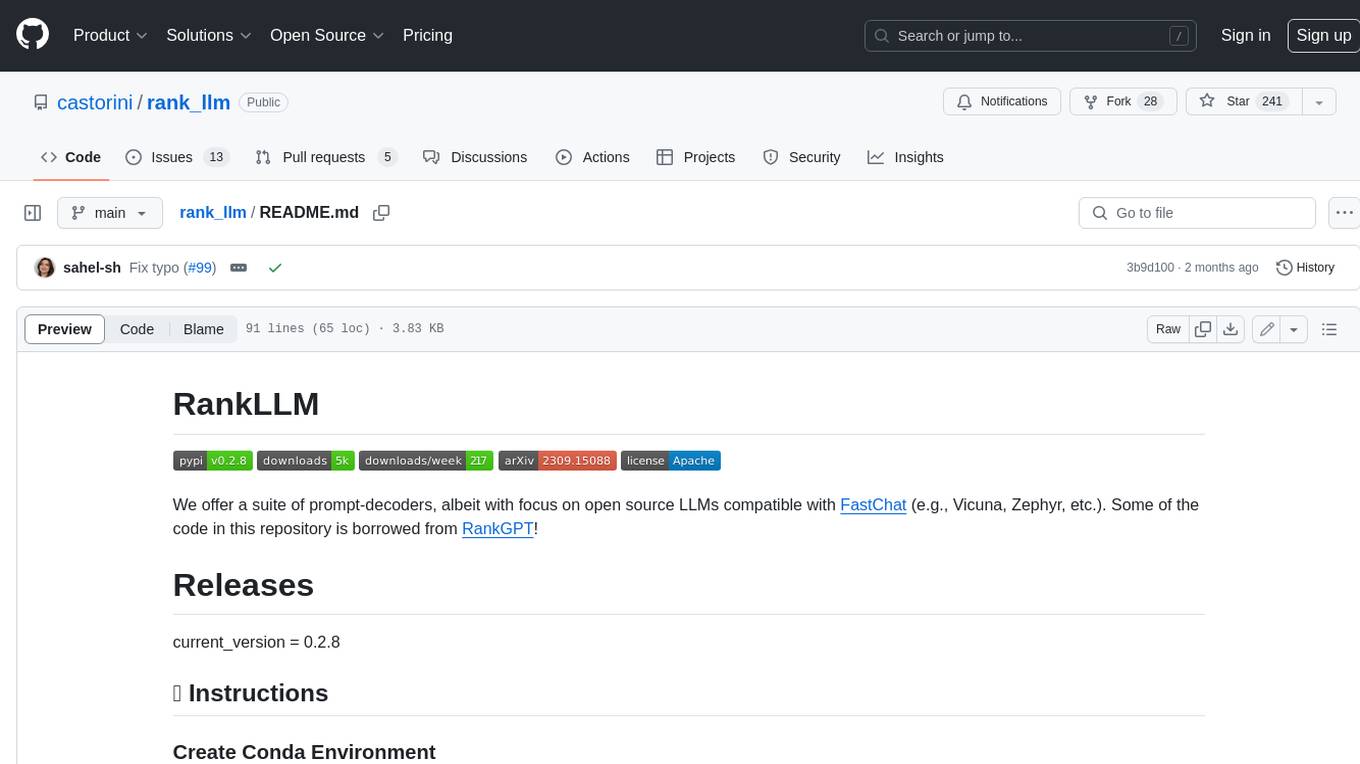
rank_llm
RankLLM is a suite of prompt-decoders compatible with open source LLMs like Vicuna and Zephyr. It allows users to create custom ranking models for various NLP tasks, such as document reranking, question answering, and summarization. The tool offers a variety of features, including the ability to fine-tune models on custom datasets, use different retrieval methods, and control the context size and variable passages. RankLLM is easy to use and can be integrated into existing NLP pipelines.
XLICON-V2-MD
XLICON-V2-MD is a versatile Multi-Device WhatsApp bot developed by Salman Ahamed. It offers a wide range of features, making it an advanced and user-friendly bot for various purposes. The bot supports multi-device operation, AI photo enhancement, downloader commands, hidden NSFW commands, logo generation, anime exploration, economic activities, games, and audio/video editing. Users can deploy the bot on platforms like Heroku, Replit, Codespace, Okteto, Railway, Mongenius, Coolify, and Render. The bot is maintained by Salman Ahamed and Abraham Dwamena, with contributions from various developers and testers. Misusing the bot may result in a ban from WhatsApp, so users are advised to use it at their own risk.
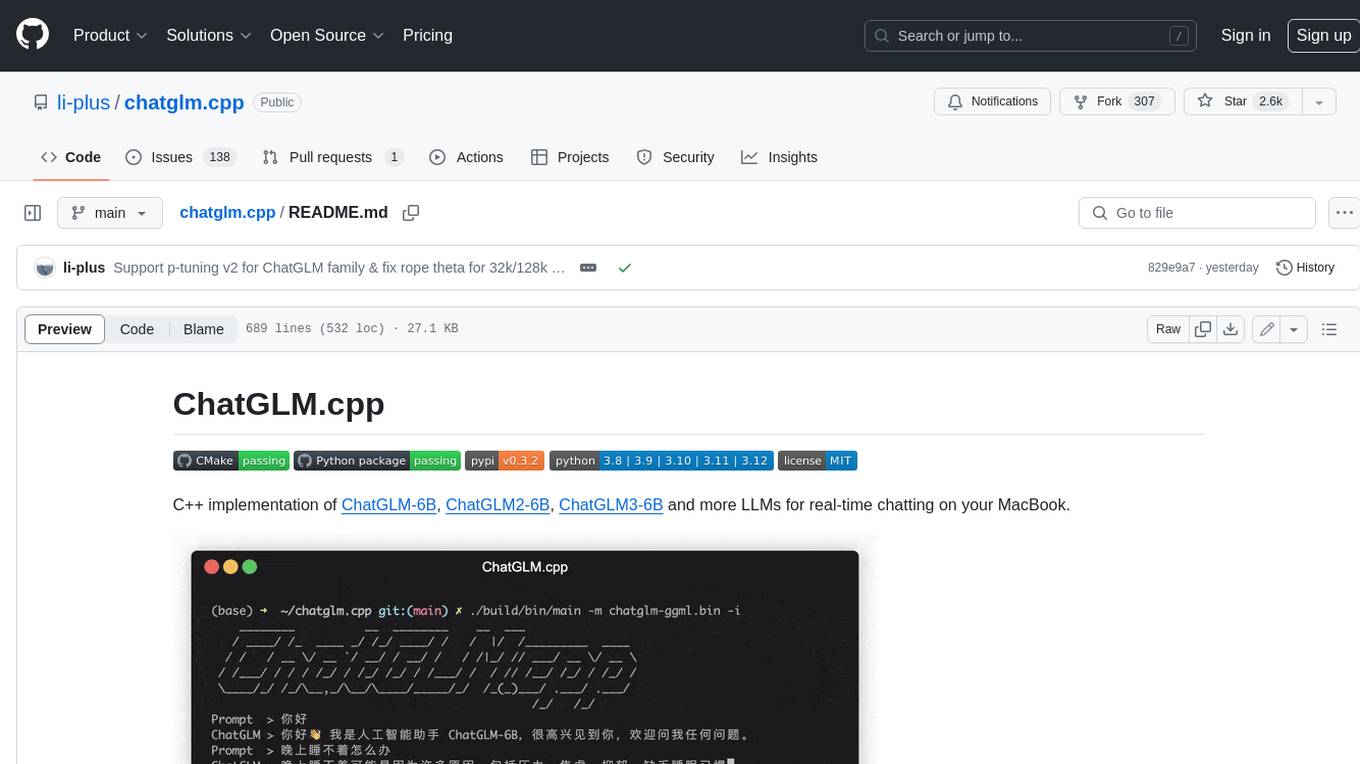
chatglm.cpp
ChatGLM.cpp is a C++ implementation of ChatGLM-6B, ChatGLM2-6B, ChatGLM3-6B and more LLMs for real-time chatting on your MacBook. It is based on ggml, working in the same way as llama.cpp. ChatGLM.cpp features accelerated memory-efficient CPU inference with int4/int8 quantization, optimized KV cache and parallel computing. It also supports P-Tuning v2 and LoRA finetuned models, streaming generation with typewriter effect, Python binding, web demo, api servers and more possibilities.
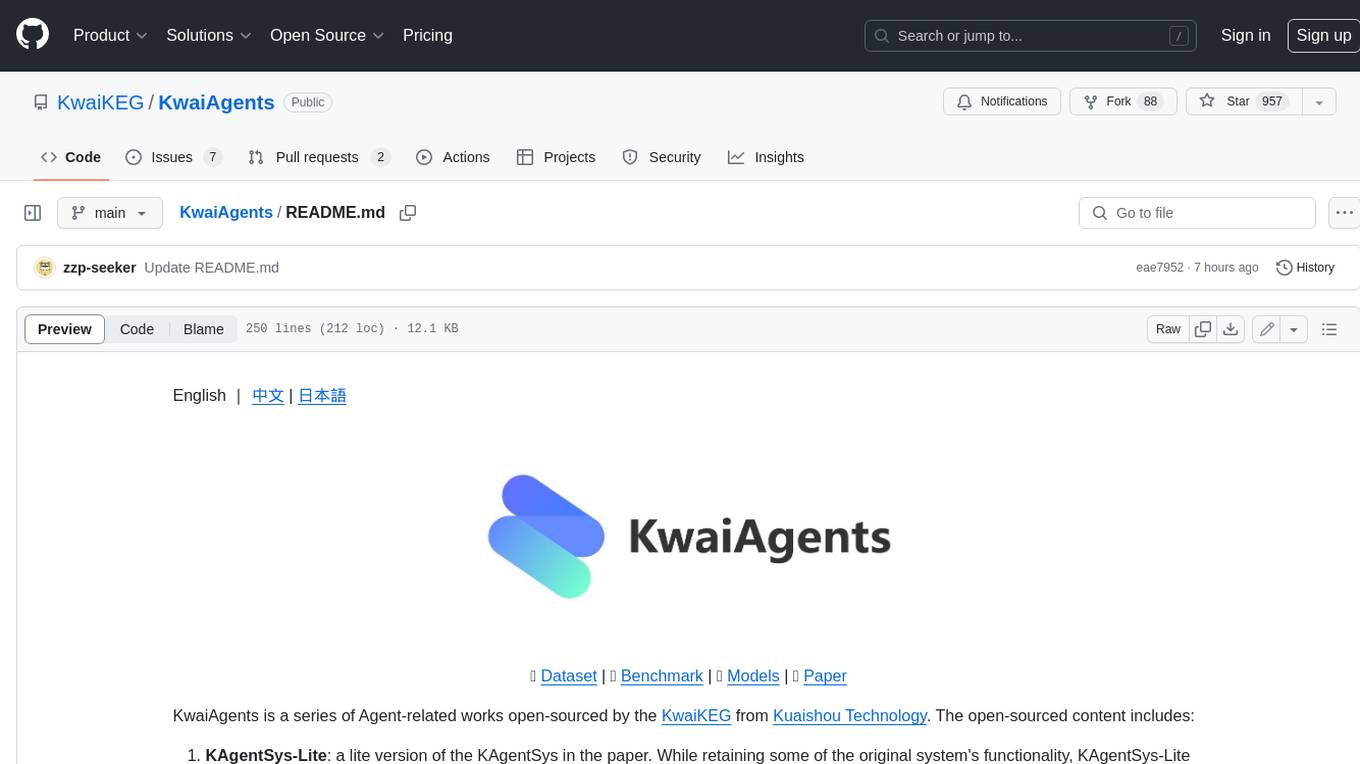
KwaiAgents
KwaiAgents is a series of Agent-related works open-sourced by the [KwaiKEG](https://github.com/KwaiKEG) from [Kuaishou Technology](https://www.kuaishou.com/en). The open-sourced content includes: 1. **KAgentSys-Lite**: a lite version of the KAgentSys in the paper. While retaining some of the original system's functionality, KAgentSys-Lite has certain differences and limitations when compared to its full-featured counterpart, such as: (1) a more limited set of tools; (2) a lack of memory mechanisms; (3) slightly reduced performance capabilities; and (4) a different codebase, as it evolves from open-source projects like BabyAGI and Auto-GPT. Despite these modifications, KAgentSys-Lite still delivers comparable performance among numerous open-source Agent systems available. 2. **KAgentLMs**: a series of large language models with agent capabilities such as planning, reflection, and tool-use, acquired through the Meta-agent tuning proposed in the paper. 3. **KAgentInstruct**: over 200k Agent-related instructions finetuning data (partially human-edited) proposed in the paper. 4. **KAgentBench**: over 3,000 human-edited, automated evaluation data for testing Agent capabilities, with evaluation dimensions including planning, tool-use, reflection, concluding, and profiling.
For similar tasks
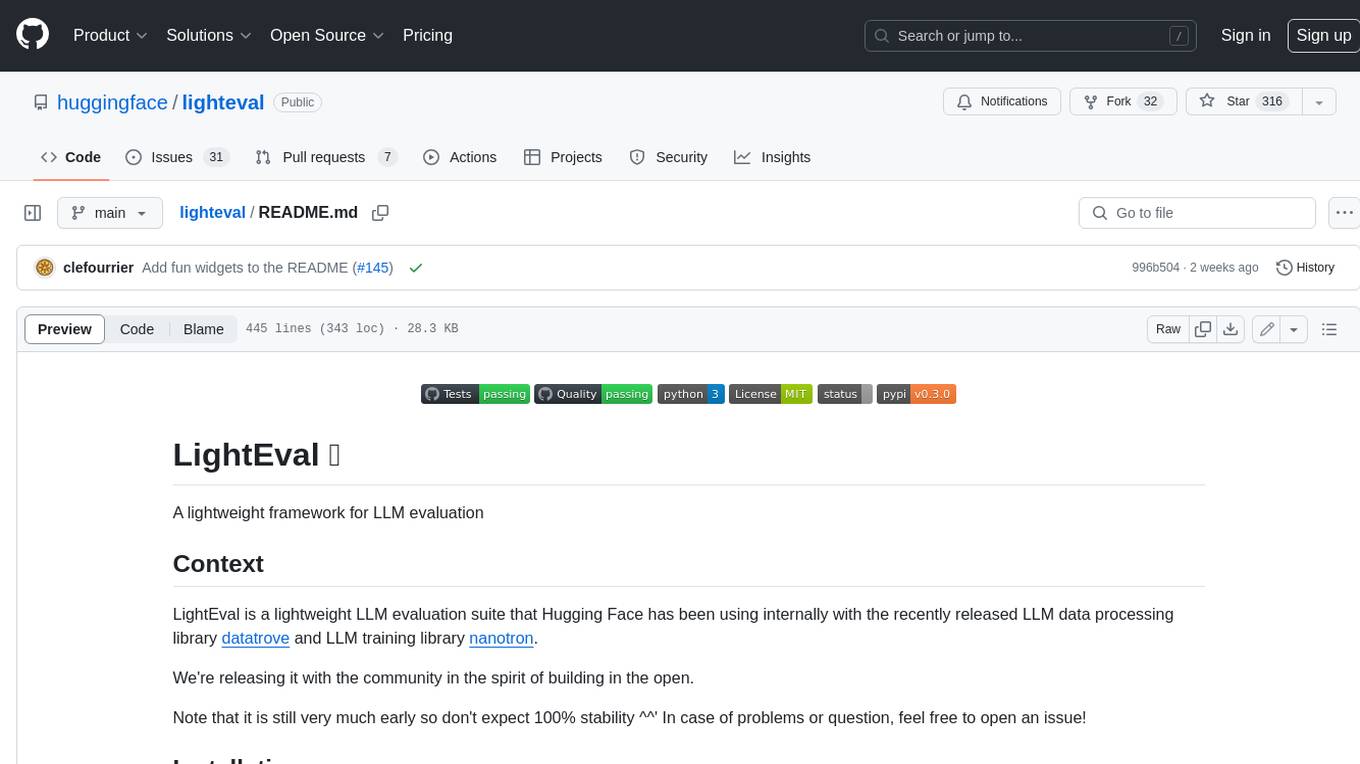
lighteval
LightEval is a lightweight LLM evaluation suite that Hugging Face has been using internally with the recently released LLM data processing library datatrove and LLM training library nanotron. We're releasing it with the community in the spirit of building in the open. Note that it is still very much early so don't expect 100% stability ^^' In case of problems or question, feel free to open an issue!
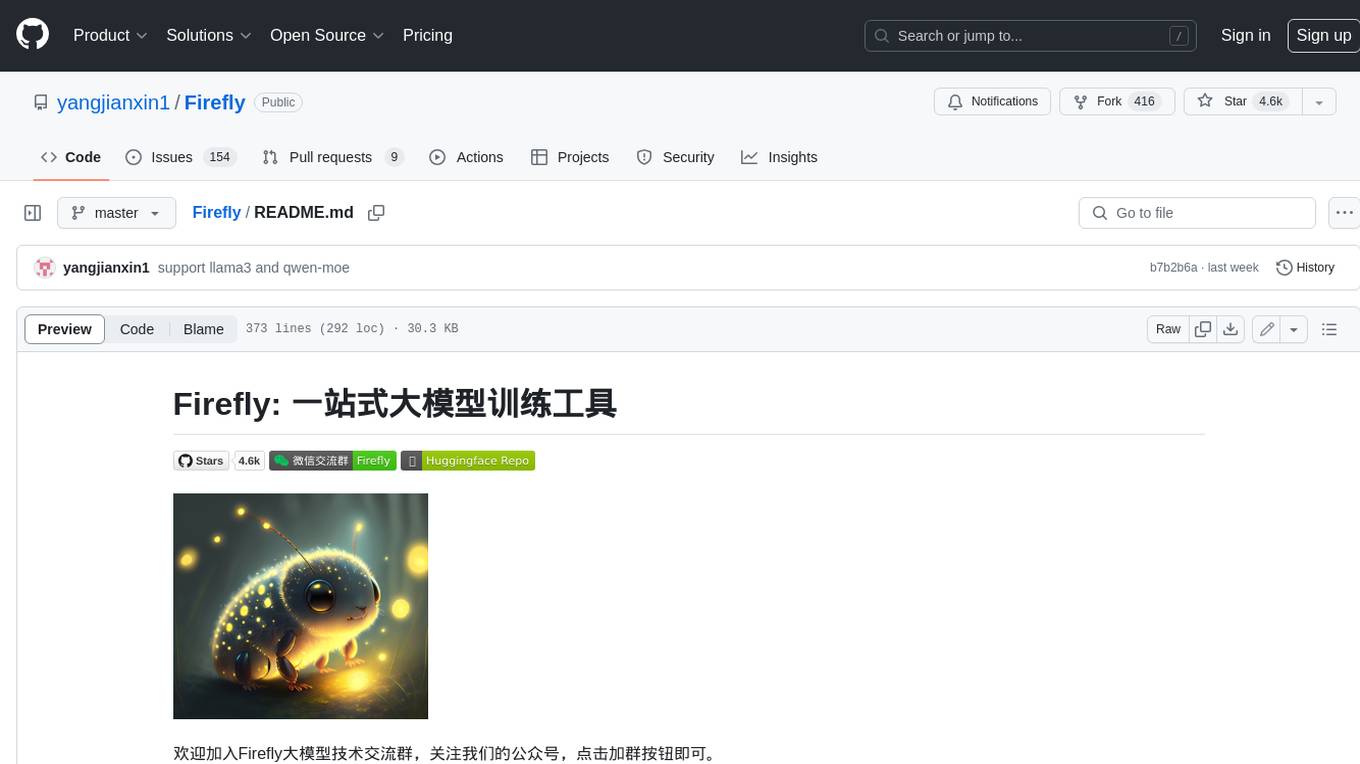
Firefly
Firefly is an open-source large model training project that supports pre-training, fine-tuning, and DPO of mainstream large models. It includes models like Llama3, Gemma, Qwen1.5, MiniCPM, Llama, InternLM, Baichuan, ChatGLM, Yi, Deepseek, Qwen, Orion, Ziya, Xverse, Mistral, Mixtral-8x7B, Zephyr, Vicuna, Bloom, etc. The project supports full-parameter training, LoRA, QLoRA efficient training, and various tasks such as pre-training, SFT, and DPO. Suitable for users with limited training resources, QLoRA is recommended for fine-tuning instructions. The project has achieved good results on the Open LLM Leaderboard with QLoRA training process validation. The latest version has significant updates and adaptations for different chat model templates.
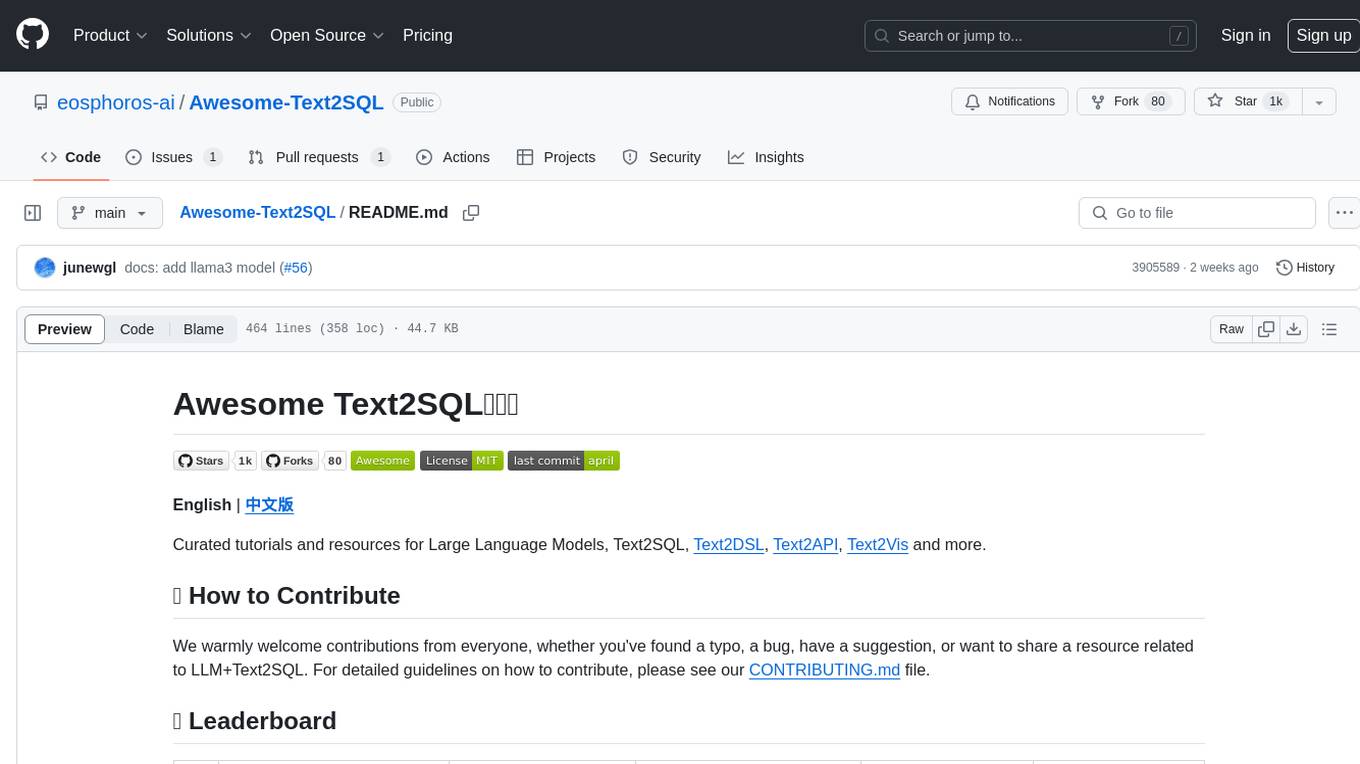
Awesome-Text2SQL
Awesome Text2SQL is a curated repository containing tutorials and resources for Large Language Models, Text2SQL, Text2DSL, Text2API, Text2Vis, and more. It provides guidelines on converting natural language questions into structured SQL queries, with a focus on NL2SQL. The repository includes information on various models, datasets, evaluation metrics, fine-tuning methods, libraries, and practice projects related to Text2SQL. It serves as a comprehensive resource for individuals interested in working with Text2SQL and related technologies.
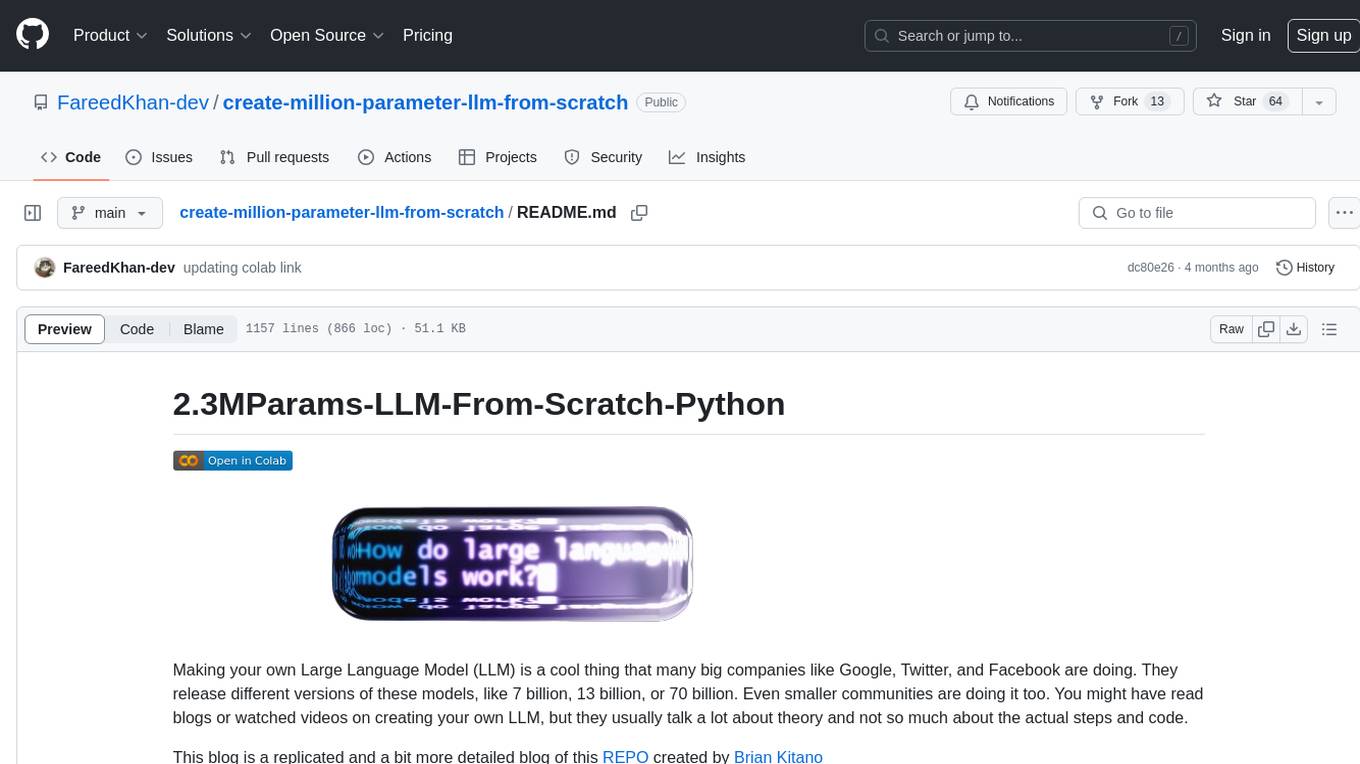
create-million-parameter-llm-from-scratch
The 'create-million-parameter-llm-from-scratch' repository provides a detailed guide on creating a Large Language Model (LLM) with 2.3 million parameters from scratch. The blog replicates the LLaMA approach, incorporating concepts like RMSNorm for pre-normalization, SwiGLU activation function, and Rotary Embeddings. The model is trained on a basic dataset to demonstrate the ease of creating a million-parameter LLM without the need for a high-end GPU.
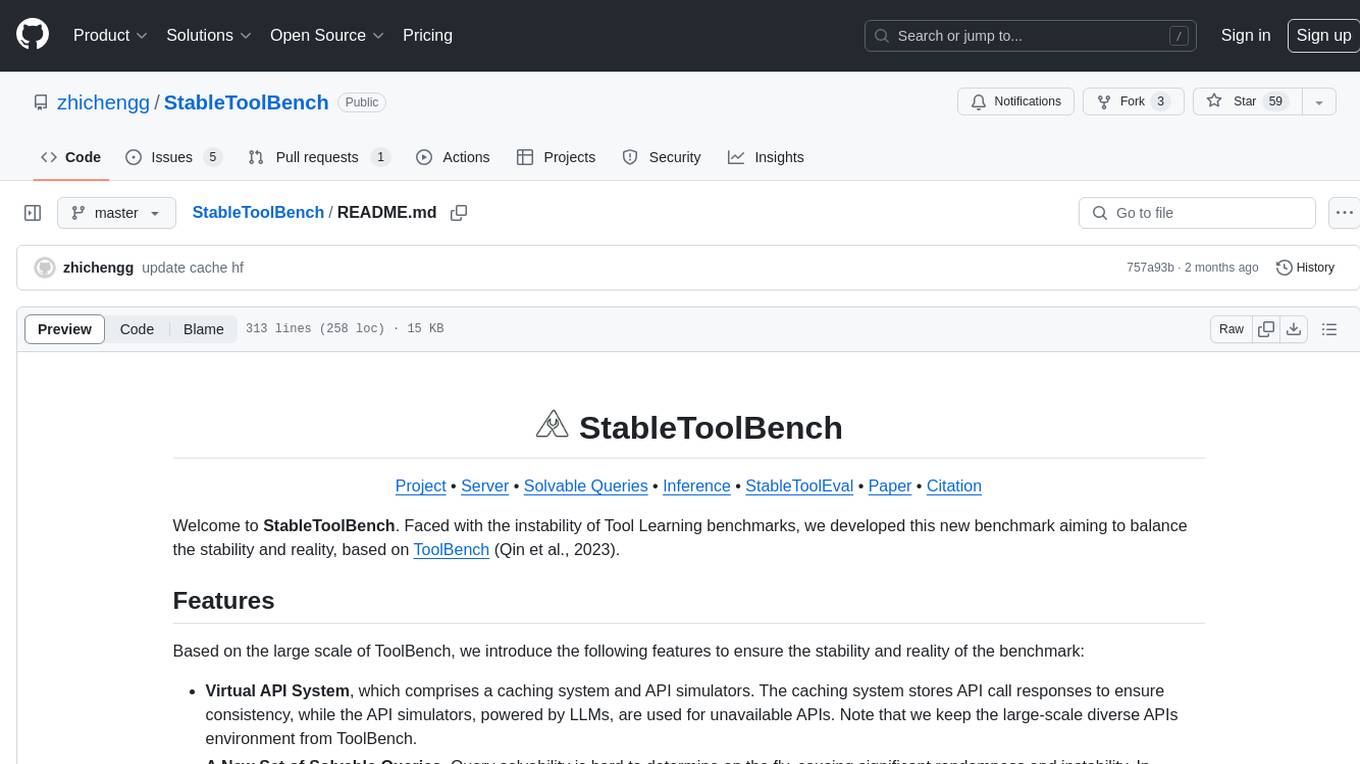
StableToolBench
StableToolBench is a new benchmark developed to address the instability of Tool Learning benchmarks. It aims to balance stability and reality by introducing features such as a Virtual API System with caching and API simulators, a new set of solvable queries determined by LLMs, and a Stable Evaluation System using GPT-4. The Virtual API Server can be set up either by building from source or using a prebuilt Docker image. Users can test the server using provided scripts and evaluate models with Solvable Pass Rate and Solvable Win Rate metrics. The tool also includes model experiments results comparing different models' performance.
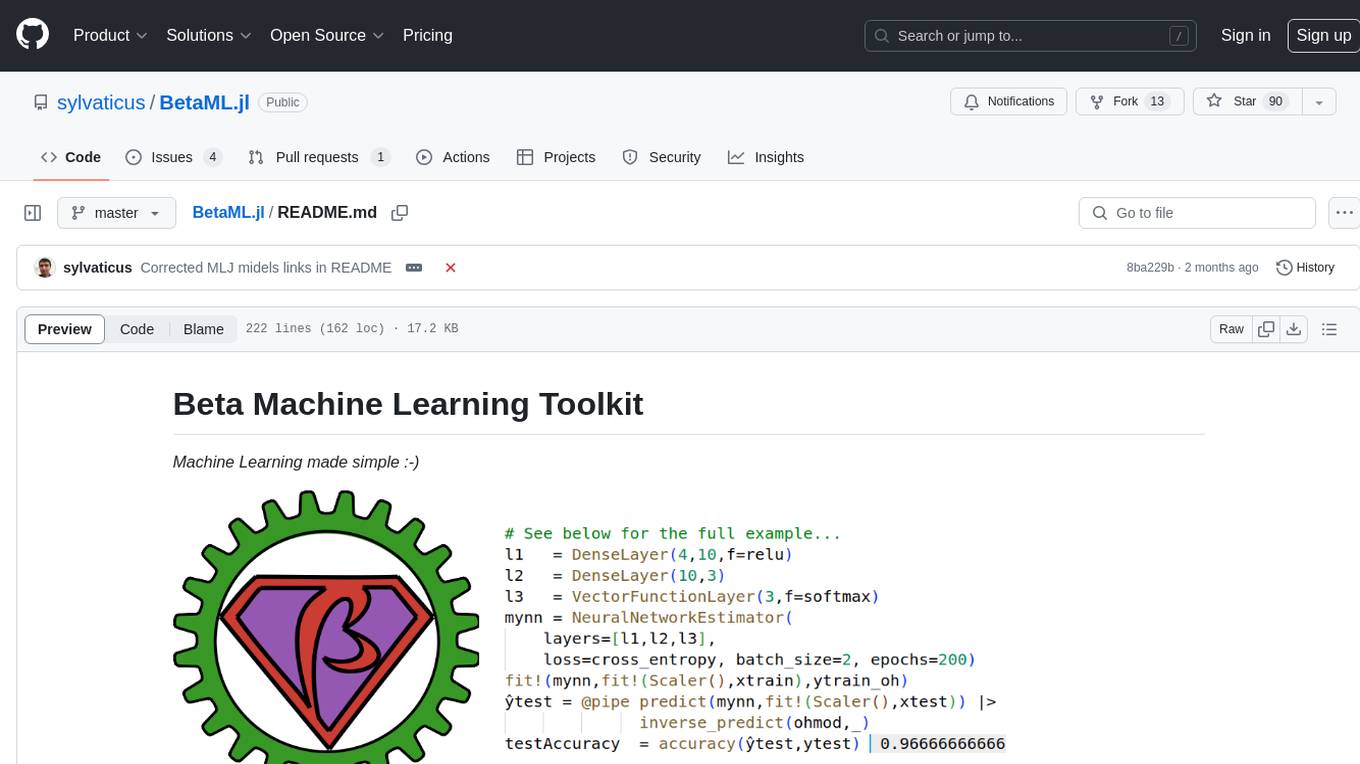
BetaML.jl
The Beta Machine Learning Toolkit is a package containing various algorithms and utilities for implementing machine learning workflows in multiple languages, including Julia, Python, and R. It offers a range of supervised and unsupervised models, data transformers, and assessment tools. The models are implemented entirely in Julia and are not wrappers for third-party models. Users can easily contribute new models or request implementations. The focus is on user-friendliness rather than computational efficiency, making it suitable for educational and research purposes.
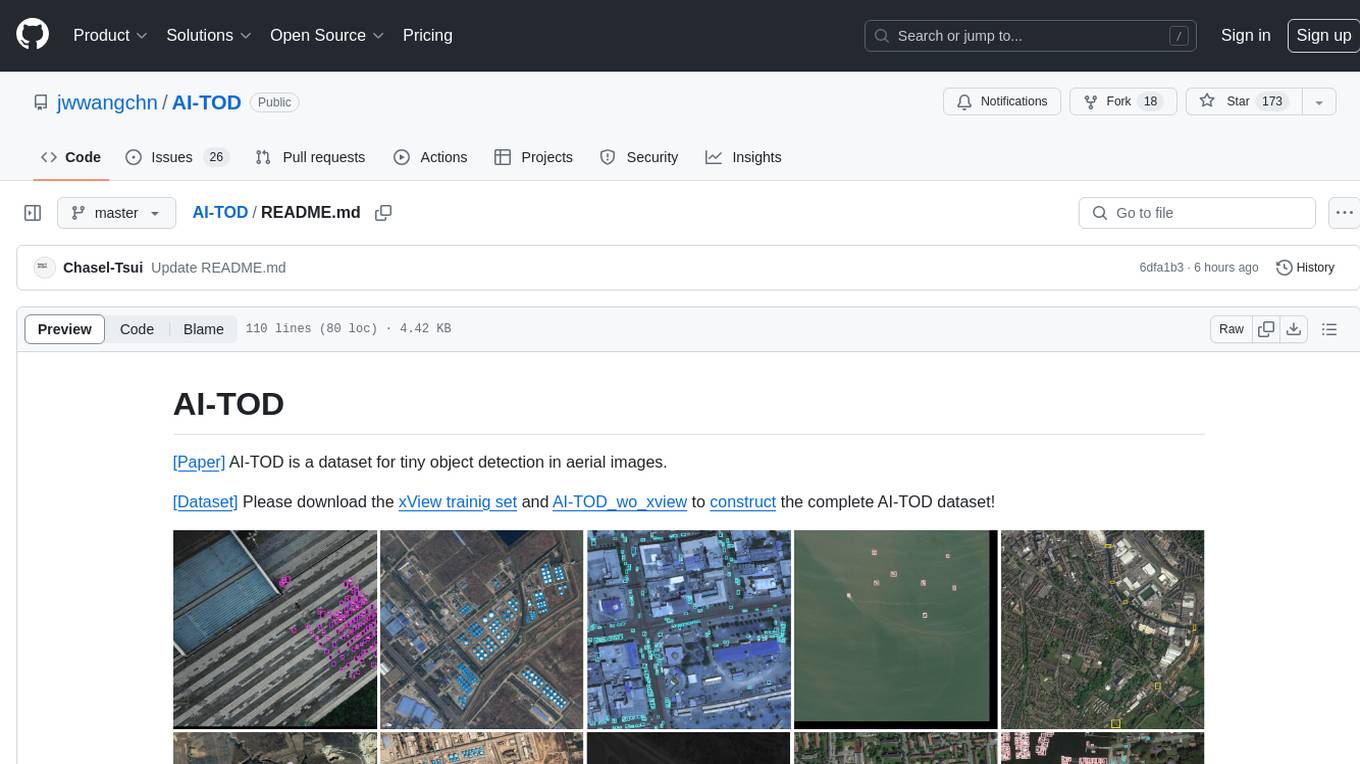
AI-TOD
AI-TOD is a dataset for tiny object detection in aerial images, containing 700,621 object instances across 28,036 images. Objects in AI-TOD are smaller with a mean size of 12.8 pixels compared to other aerial image datasets. To use AI-TOD, download xView training set and AI-TOD_wo_xview, then generate the complete dataset using the provided synthesis tool. The dataset is publicly available for academic and research purposes under CC BY-NC-SA 4.0 license.
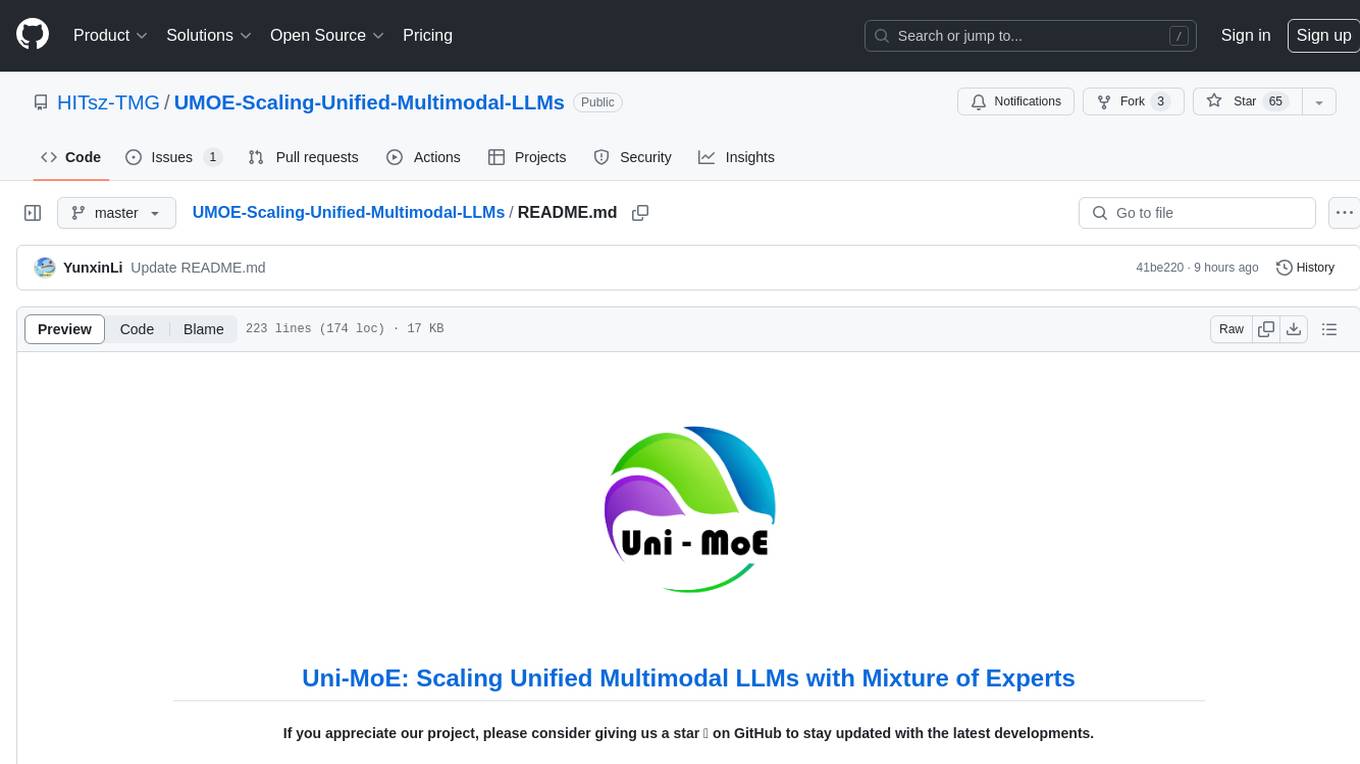
UMOE-Scaling-Unified-Multimodal-LLMs
Uni-MoE is a MoE-based unified multimodal model that can handle diverse modalities including audio, speech, image, text, and video. The project focuses on scaling Unified Multimodal LLMs with a Mixture of Experts framework. It offers enhanced functionality for training across multiple nodes and GPUs, as well as parallel processing at both the expert and modality levels. The model architecture involves three training stages: building connectors for multimodal understanding, developing modality-specific experts, and incorporating multiple trained experts into LLMs using the LoRA technique on mixed multimodal data. The tool provides instructions for installation, weights organization, inference, training, and evaluation on various datasets.
For similar jobs

sweep
Sweep is an AI junior developer that turns bugs and feature requests into code changes. It automatically handles developer experience improvements like adding type hints and improving test coverage.

teams-ai
The Teams AI Library is a software development kit (SDK) that helps developers create bots that can interact with Teams and Microsoft 365 applications. It is built on top of the Bot Framework SDK and simplifies the process of developing bots that interact with Teams' artificial intelligence capabilities. The SDK is available for JavaScript/TypeScript, .NET, and Python.

ai-guide
This guide is dedicated to Large Language Models (LLMs) that you can run on your home computer. It assumes your PC is a lower-end, non-gaming setup.

classifai
Supercharge WordPress Content Workflows and Engagement with Artificial Intelligence. Tap into leading cloud-based services like OpenAI, Microsoft Azure AI, Google Gemini and IBM Watson to augment your WordPress-powered websites. Publish content faster while improving SEO performance and increasing audience engagement. ClassifAI integrates Artificial Intelligence and Machine Learning technologies to lighten your workload and eliminate tedious tasks, giving you more time to create original content that matters.

chatbot-ui
Chatbot UI is an open-source AI chat app that allows users to create and deploy their own AI chatbots. It is easy to use and can be customized to fit any need. Chatbot UI is perfect for businesses, developers, and anyone who wants to create a chatbot.

BricksLLM
BricksLLM is a cloud native AI gateway written in Go. Currently, it provides native support for OpenAI, Anthropic, Azure OpenAI and vLLM. BricksLLM aims to provide enterprise level infrastructure that can power any LLM production use cases. Here are some use cases for BricksLLM: * Set LLM usage limits for users on different pricing tiers * Track LLM usage on a per user and per organization basis * Block or redact requests containing PIIs * Improve LLM reliability with failovers, retries and caching * Distribute API keys with rate limits and cost limits for internal development/production use cases * Distribute API keys with rate limits and cost limits for students

uAgents
uAgents is a Python library developed by Fetch.ai that allows for the creation of autonomous AI agents. These agents can perform various tasks on a schedule or take action on various events. uAgents are easy to create and manage, and they are connected to a fast-growing network of other uAgents. They are also secure, with cryptographically secured messages and wallets.

griptape
Griptape is a modular Python framework for building AI-powered applications that securely connect to your enterprise data and APIs. It offers developers the ability to maintain control and flexibility at every step. Griptape's core components include Structures (Agents, Pipelines, and Workflows), Tasks, Tools, Memory (Conversation Memory, Task Memory, and Meta Memory), Drivers (Prompt and Embedding Drivers, Vector Store Drivers, Image Generation Drivers, Image Query Drivers, SQL Drivers, Web Scraper Drivers, and Conversation Memory Drivers), Engines (Query Engines, Extraction Engines, Summary Engines, Image Generation Engines, and Image Query Engines), and additional components (Rulesets, Loaders, Artifacts, Chunkers, and Tokenizers). Griptape enables developers to create AI-powered applications with ease and efficiency.

